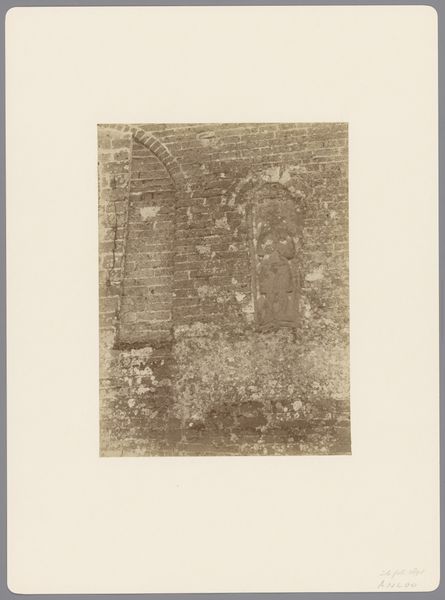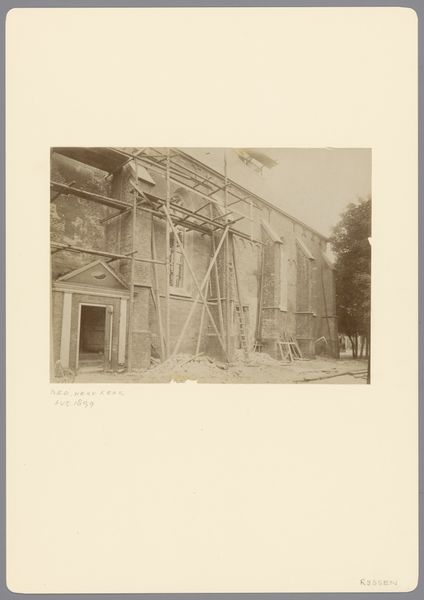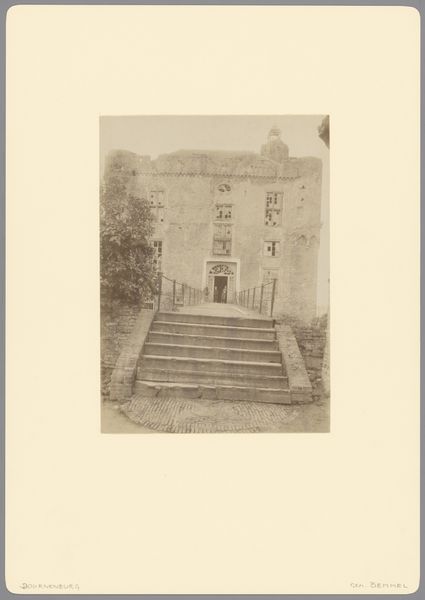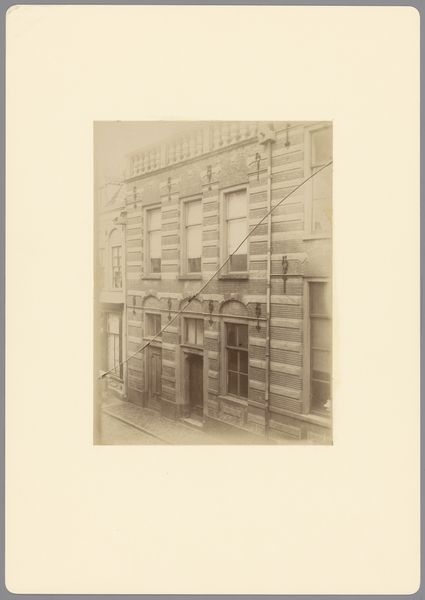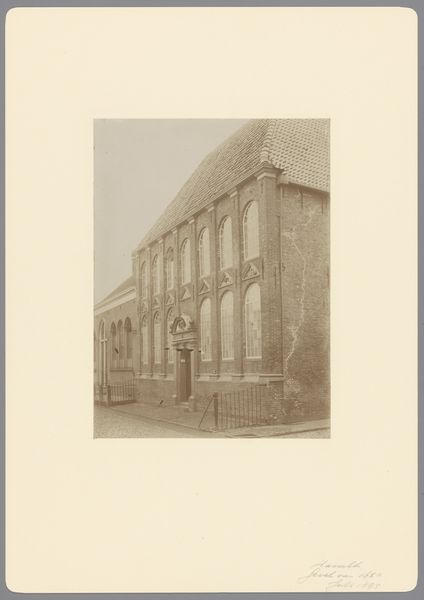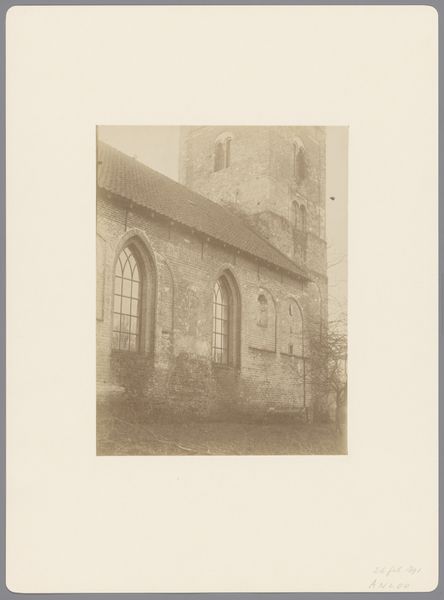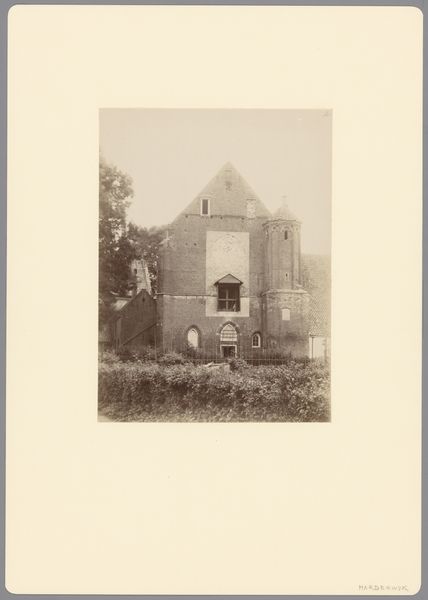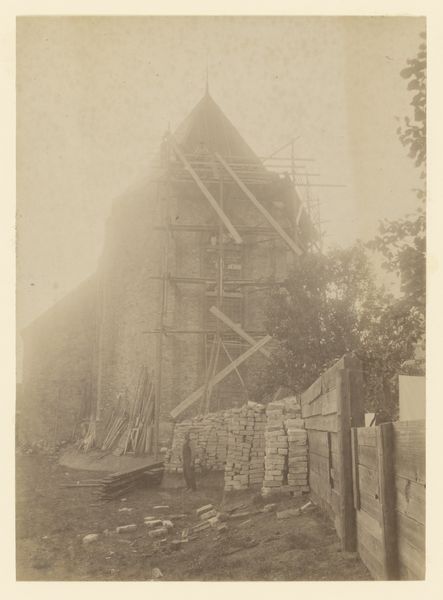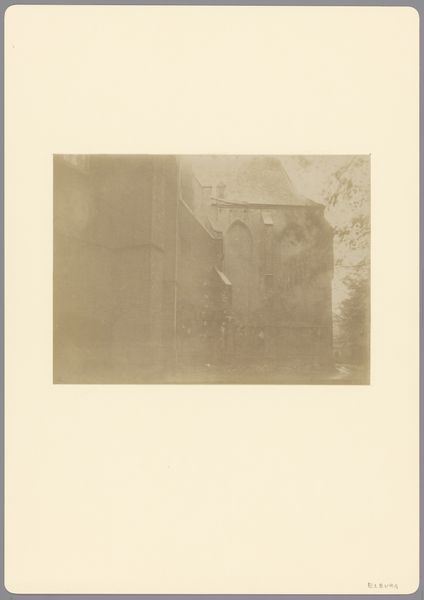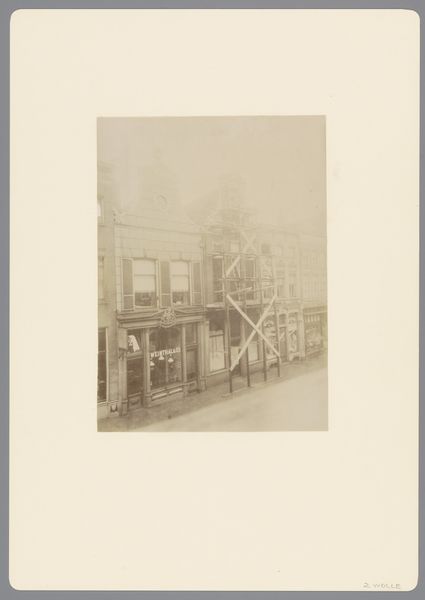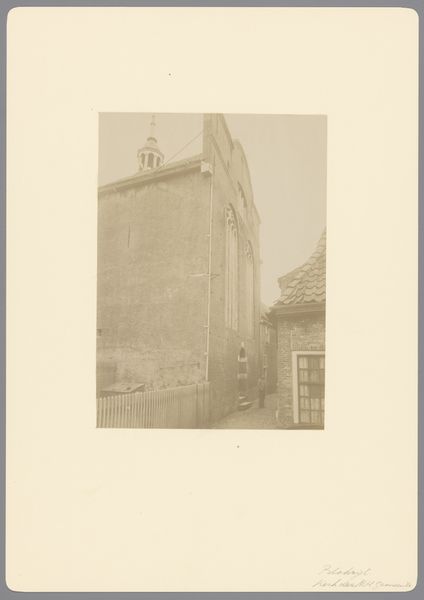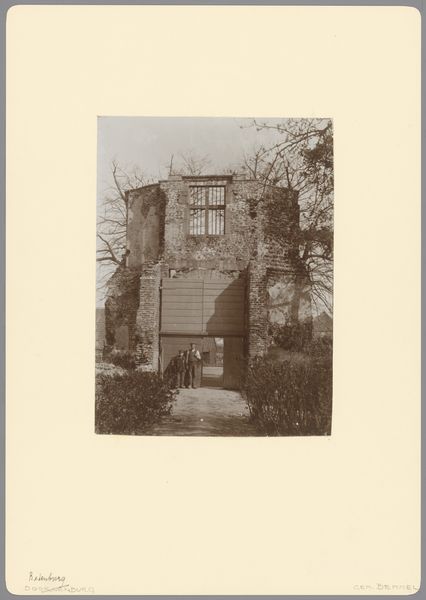
Dimensions: height 233 mm, width 170 mm
Copyright: Rijks Museum: Open Domain
Curator: This albumen print, taken in 1899, is titled "Gewelfjuk van de Grote of Schildkerk te Rijssen." The image, created by an anonymous photographer associated with Monumentenzorg, captures a moment in the structural life of the Great Church in Rijssen. What’s your initial take on it? Editor: Oh, my first thought? Ghosts! It looks like the building is exhaling the past. A spectral document of transition, but in the most brick-and-mortar kind of way, ha! It looks abandoned, or perhaps about to be something completely new. Curator: Absolutely, this church embodies layers of history. Consider that at the time, conservation and restoration practices were still solidifying as ways of addressing architectural heritage. So images like this play a role, they become documentation for state-sponsored programs and ideologies centered around cultural preservation. The peeled façade really does invite us to excavate histories buried, literally and figuratively, within that structure. Editor: It also sort of looks like it is breathing new life. Those scaffolding lines leading up to that missing or boarded-up door frame… it makes me wonder what sort of ceremonies or important rituals might have been held within that doorway? Was that its original intention or did the doorway emerge after years of cultural transformation within that space? There's this strange dichotomy to it, almost hopeful despite the crumbling bricks and faded structure. Curator: Yes, and that's critical! Spaces evolve, architectures get adapted to emergent requirements and social mores; churches transform their functions over long expanses of time. So what does it signify to commit to fixing it within one, defined temporal point? What historical narrative do we enable by trying to reverse entropy? How much liberty does future-generation have to decide the cultural narrative? Editor: You know, there’s an odd parallel too. It’s not only about how structures transform but how cultural perspective transforms them, in this case through image making… it adds an intentional, often artificial, framework. Looking at this building through a viewfinder has a way of transforming its life and what its next life will be. Wow, that's kind of weird, isn't it? Curator: Indeed. These seemingly straightforward photographs also become artifacts in a meta sense! The act of documenting becomes an ideological undertaking, with its own cultural and theoretical frameworks. So while on one hand we appreciate what is getting restored and preserved we must remember to be thoughtful about power at play within this photographic "relic." Editor: So, the next time I walk into a newly preserved historical building, I have to remember to consider more about not just the preservation itself but the preservator too, which means it will add at least another two hours for my visit. Fantastic! Curator: Exactly, you will understand not only that preserved history but a little about who curated the narrative too!
Comments
No comments
Be the first to comment and join the conversation on the ultimate creative platform.
